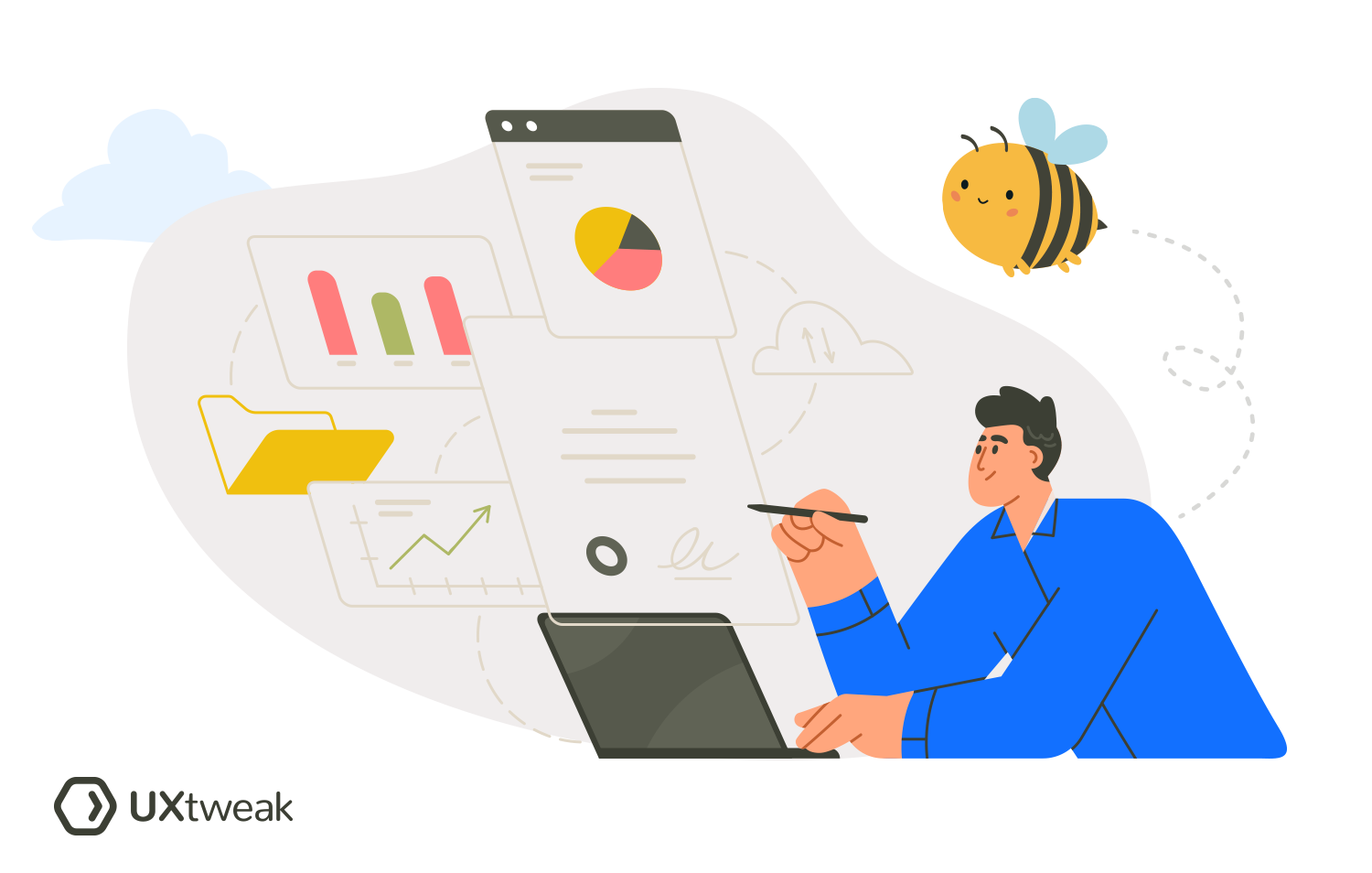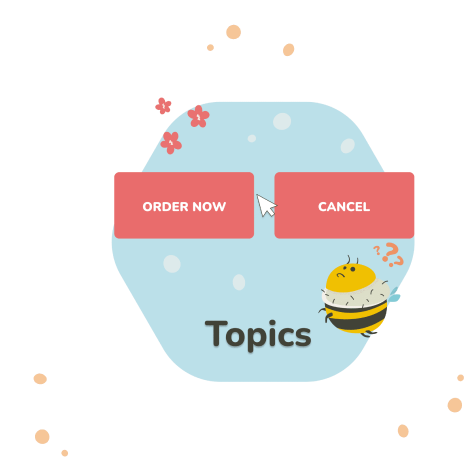Collecting customer feedback is only a part of the job. The real insights come during the analysis process, when teams actually get to analyze customer feedback and transform it into actionable ideas for improvement.
Let’s take a sneak peek into the process of customer feedback analysis and find out how it is performed.
Key Insights:
➡️ Customer feedback analysis translates customer experience data into actionable insights to improve the product.
❗ Analyzing customer feedback can be challenging due to complex language, variable quality of feedback, and various feedback channels.
✅ There are various tools and methods available to assist you with the analysis.
🧠 Understanding customer needs, enabling continuous improvement, and identifying hidden issues are key benefits of customer feedback analysis.
What is customer feedback analysis?

Customer feedback analysis is the process used to make sense of the obtained information about customer’s experiences with your product. It entails translating huge amounts of data into actionable insights that can be acted upon, with a goal to improve the product and better understand customer needs.
Why analyzing customer feedback can be difficult?
While customer feedback analysis is usually an extremely insightful process, you can also encounter difficulties that can complicate it. Here are some of the main roadblocks that you should be aware of:
1. People use complex language
Sometimes your customers may use nuanced, complex language, including jargon, slang, abbreviations, or region-specific phrases when giving feedback. This can make it difficult to analyze as such nuances often take a bit more time to decode.
Apart from that, you may also face spelling mistakes, wording and grammatical errors that may also add complexity to data analytics, but are not as critical.
The last problem that you may encounter in that area is the lack of context or details about the problem. Sometimes, even if customers use simple language to describe their issue, it is still not enough for you to understand what the problem is about and how to solve it. In those cases you can always follow up with the customer, ask them to elaborate and give you more details about the issue they’ve faced.
2. Customer feedback quality is varied
Not all the feedback you receive will be equally insightful. While some customers will describe every little detail of their interaction, providing you with valuable insights, others may just express a sentiment (“I love it!” or “I hate it!”) and leave you wondering.
To deal with that problem you can try and play with the wording of your customer feedback questions, and alter it in a way that encourages customers to share more details about their experiences. However, you can’t avoid this completely, so just take this into account and focus on analyzing the feedback that gives you actual insights.
3. Many feedback channels to analyze
Probably the biggest challenge of user feedback analysis is the fact that it all comes from different channels: support tickets, social media, email, surveys, reviews and others. It is often hard to gather all that information in one place for a consolidated analysis.
Apart from that, different channels collect data using different methods, meaning most of them also require a different approach to the analysis.
Luckily, this problem can be solved by implementing customer feedback tools that assist in centralized feedback collection.
Why is customer feedback analysis important?

Customer feedback analysis is important for several main reasons:
- Understanding customer needs: by analyzing feedback product and customer service teams are able to empathize with customers, get to know and understand their issues better. This builds a strong foundation for creating a user-centric product that exceeds customer expectations.
- Continuous improvement: by constantly collecting and analyzing feedback you’re able to transform huge amounts of unstructured information into actionable insights that can be acted upon swiftly.
- Identifying issues: customer feedback analysis often uncovers hidden usability issues that you would not even think of. Some areas get overlooked while testing, and that’s exactly where customer feedback comes in.
Overall, although customer feedback analysis might take a longer time, it is a critical step in the customer feedback loop that helps to structure the obtained information and make it suitable for supporting design decisions.
Methods to analyze customer feedback

Now that we know why customer feedback analysis is important, let’s take a look at some of the ways you can analyze customer feedback.
Manual Customer Feedback Analysis
The first method is the traditional manual approach to the analysis. It doesn’t include any specialized software or other assisting technologies like AI, for example.
Manual analysis is usually performed by the person who was collecting the data and includes 4 main steps:
- Collect: first things first, you need to collect the feedback that you’re going to analyze. For this you can use various channels, depending on your target audience and their demographics. Some of the common customer feedback channels include: email, surveys, social media, customer support interactions and other.
- Categorize by feedback type/topic: to structure the information, categorize feedback based on the topic. Some examples of the categories at this stage could be: a specific product feature, pricing, customer service, user experience etc.
- Categorize by a specific issue: to narrow down your categories and aid with prioritization later on, sort the feedback based on specific issues raised by customers within each category.
- Summarize: the last step is to summarize the issue in the form of key takeaways, prioritize them based on their severity and start coming up with solutions to the problems you’ve uncovered.
2. Analyze customer feedback using a script
This method is a bit more complex than the previous one, which also makes it suitable for large datasets. It involves writing a computer script (using a programming language like Python or R) meaning you’ll need programming skills as well as a basic understanding of text analysis techniques.
Using script can help to automate the collection, categorization, and summarization process of customer feedback analysis, and can even allow you to perform more complex studies, such as sentiment analysis or topic modeling.
The process of analyzing customer feedback using a script is based on relying on automated techniques such as text preprocessing and sentiment analysis to identify patterns, sentiments, and key themes. This approach helps to speed up the analysis process and easily extract insights from big piles of data.
3. Third-party software with customer feedback analytics
Another easy way of performing customer feedback analysis is by using third-party customer feedback tools to help you. Most of these tools, take UXtweak, for example, offer advanced analytics that are automatically generated at the end of each study. They visualize the insights in the form of comprehensive tables and graphs and provide you with a structured database of insights.
Many of these tools also provide sentiment analysis, which helps to automatically determine the emotional tone of the message and categorize feedback based on it.
4. Try AI for customer feedback analysis
With the latest popularity of AI we are now able to take customer feedback analysis to the next level. AI-based tools are often more expensive than our normal customer feedback tools, however, they allow for a more complex analysis of data and can identify hidden patterns that might have been missed during the manual analysis.
These tools not only allow for automation but also can help you increase efficiency of your customer feedback analysis and make it much more insightful.
Analyzing customer feedback best practices

Lastly, here are some best practices to keep in mind when analyzing customer feedback:
- Centralize: collecting feedback from various channels is essential for keeping it diverse and accurate. However, in order to keep track of all those insights and not overlook anything we recommend to centralize it all in one place for easier analysis. This can be done with the help of a specialized customer feedback tool.
- Prioritize: not all of the issues you encounter during the analysis will be equally important and critical. Some of them can wait while you’re working on solving the other. Prioritize issues in their severity and know which ones to work on first.
- Use text analytics: assist yourself by choosing a good text analytics tool to help you with feedback analysis. They help to easily identify themes and sentiments in the large volumes of text.
- Act on insights: Don’t just analyze the feedback – act on it. Instead of postponing it for better days, do your best to come up with the solutions to customers problems and implement them as soon as possible. Customer feedback should be the driving force of your product and design decisions.
- Communicate back: show customers that their voices are heard and that you’re committed to solving their issues. After receiving their feedback, communicate back and explain how you’re doing to deal with the problem as well as what they can do right not, until the solution is not implemented.
Wrapping up
And that’s it! Now you have all the information you need to successfully gather, analyze and act on customer feedback. To assist you in this process, UXtweak provides numerous tools that help you empathize with the customers and collect their opinions.
Register for your UXtweak account and use it to analyze customer feedback and generate actionable insights.



